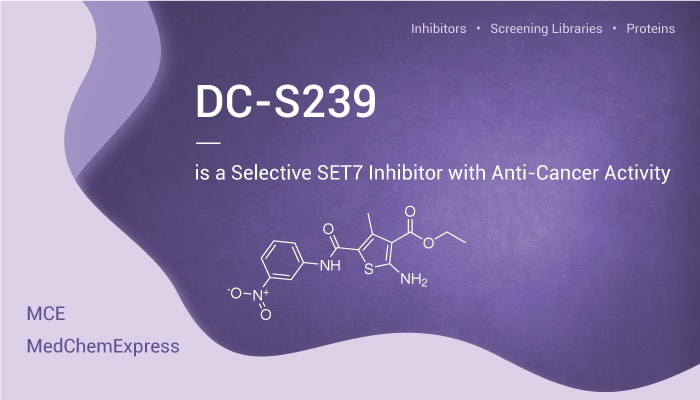SET7 is a protein lysine methyltransferase (PKMT), which methylates a plethora of proteins and regulates diverse biological processes. Meanwhile, SET7 plays a significant role in transcriptional regulation, cell cycle control, differentiation, DNA repair, and DNMT1 stability.
Specifically, researches show that SET7 is closely associated with various diseases. Particularly, SET7 regulates NF-κB activity through lysine monomethylation of p65 in response to TNF-α in human kidney cells, and knockdown of SET7 inhibits key NF-κB-dependent gene expression. Recently, research shows that epigenetic changes induced by SET7 contribute to vascular dysfunction in patients with type 2 diabetes. In addition, the downregulation of SET7 in breast cancer cells attenuates estrogen-induced gene activation. Besides, SET7 knockdown results in a concomitant decrease in the steady-state levels of estrogen receptor α (ERα) protein, which is involved in the pathology of breast cancer, endometrial cancer, and osteoporosis. As SET7 is a promising target in several diseases, including diabetes, alopecia areata, cancers, and virus infection, so it is important to find a potent SET7 inhibitor.
DC-S239 is a Selective SET7 Inhibitor With Anti-Cancer Activity.

DC-S239 is a selective histone methyltransferase SET7 inhibitor with an IC50 value of 4.59 μM. Meanwhile, DC-S239 also shows selective on DNMT1, DOT1L, EZH2, NSD1, SETD8 and G9a. This compound inhibits the activity of DNMT1, DOT1L, EZH2, NSD1, SETD8 and G9a by less than 45%, while it inhibits SET7 by 90% at concentrations of 100 μM. Moreover, DC-S239 (0-100 μM, 120 h) shows antiproliferative activity for MCF7, HL60 cells with the IC50 values of 10.93 μM and 16.43 μM, respectively. But shows no significant effect on the activity of HCT116 and DHL4 cells.
In conclusion, DC-S239 is a potent and selective SET7 Inhibitor and shows antiproliferative activity for some cancer cells.
Reference:
[1] Mahesh A, et al. Biochim Biophys Acta Mol Cell Res. 2020 Feb;1867(2):118611.
[2] Meng F, et al. J Med Chem. 2015 Oct 22;58(20):8166-81.